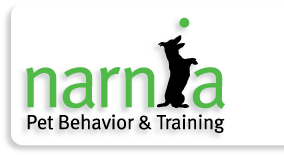|
About Sarah | Online Registration
Day One
Morning - Understanding Canine Body Language
When we interact with other human beings, understanding their body language cues helps facilitate understanding and prevent issues in communication (which is one of the reasons why social media and electronic communication can be so tricky). Thankfully dogs don't use social media (yet), but we still seem to have quite a bit of "myth" to overcome regarding canine body language cues, what they mean, and how we need to respond to the cues we are being given by our dogs in a variety of situations. This morning we will look both at the error of our ways regarding OUR body language and the real meanings behind our dog's communication signals.
Afternoon - Common Problems and Real Solutions
To start the afternoon, we will review our morning session by looking at body languagesequences in a variety of contexts (homes, vet clinics, on walks etc.) viewing behaviors appearing in real life "clusters".
The afternoon will continue by looking at the five main culprits of human misunderstanding that commonly lead to a variety of canine behavior problems from resource guarding to aggression, from separation distress to leash reactivity.
The culprits include:
- Lack of understanding of canine sensory systems
- Inaccurate views of terms like "dominance", "alpha" and leadership
- Problems on both ends of the spectrum...freedom vs. control
- Lack of understanding of how dogs think and learn
- Inappropriate / Excessive use of punishment
As we discuss the culprit areas, we will look at some surprisingly simple environmental and behavioral changes that can prevent many behavior problems from taking root.
Day Two
Morning - Canine Risk Assessment Protocol introduction and proper use
As more trainers enter the field and more pet owners realize that there may be help for their dogs with moderate to severe behavior issues, the Risk Assessment provides dog professionals with a framework to help them determine the base behavioral causes of the dog's problems, the owner's commitment and ability to work with those problems, the safety of the dog in it's current environment and the potential effectiveness of behavior modification. It also helps us understand times when we, as canine service professionals, may be in over our heads and need to refer on to other specialists such as behavior consultants or veterinary behaviorists who focus on aggression issues and have a more suitable level of experience with a particularly severe issue.
This morning we will look at the Risk Assessmen tool in detail and practice it’s use working in small groups (if possible) with a number of real life cases shown via video.
Afternoon - Diagnosis through case study and general behavior modification planning
Over the weekend we have learned how to understand dogs more thoroughly and to be aware of common mistakes owners make and the behavior problems those mistakes are typically associated with.
We have reviewed a tool to help us determine the base behavioral causes of our client's dogs and whether it is safe and/or possible to work with the dog in the current environment and we are up to the challenge.
What next? That is where the afternoon will take us. What are the key components to ANY behavior modification program and what do they look like? How do we implement the changes? What is our role in the process? We will again use video case studies, discussion and keynote to review the behavior modification process and round out our weekend of Canine Behavior Problems and Real Solutions.
|












